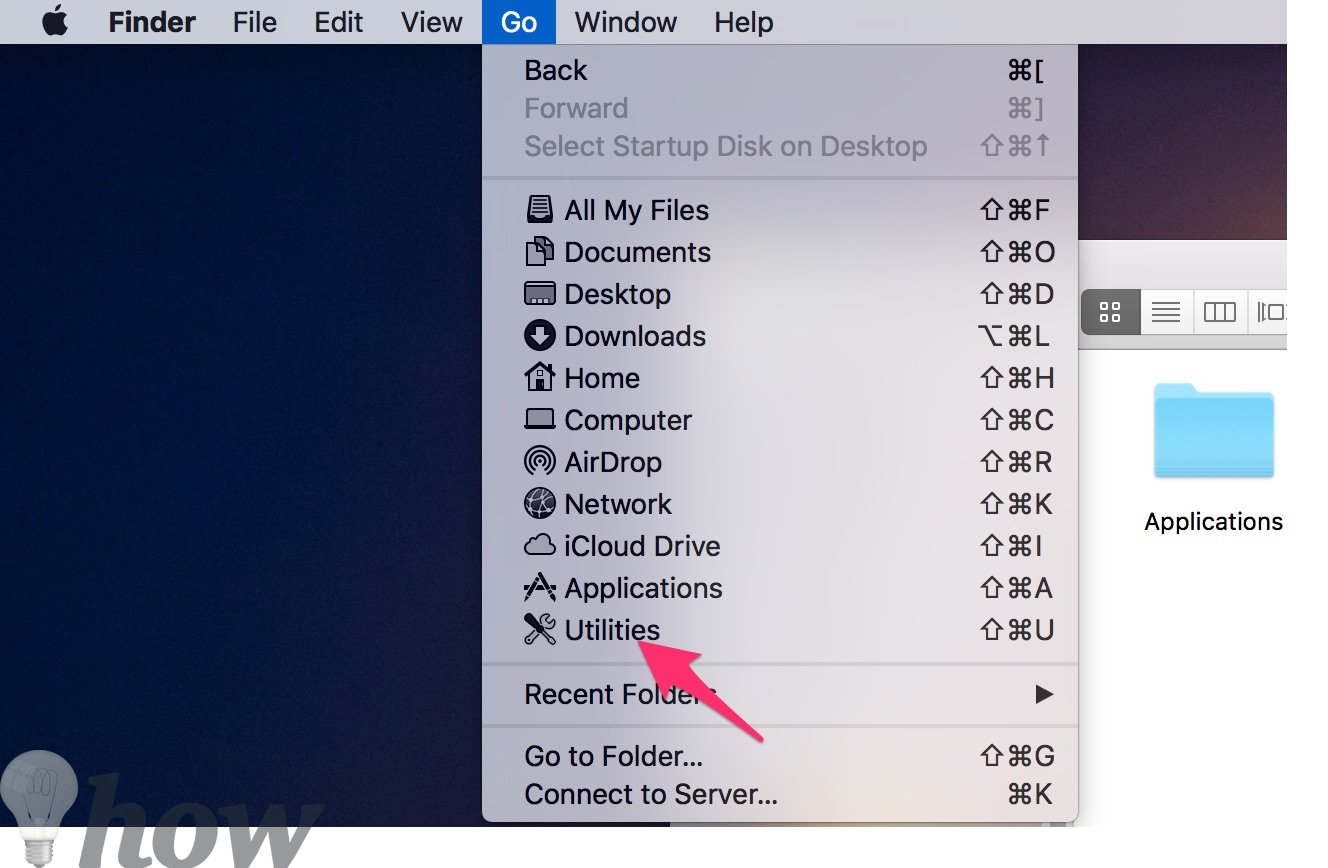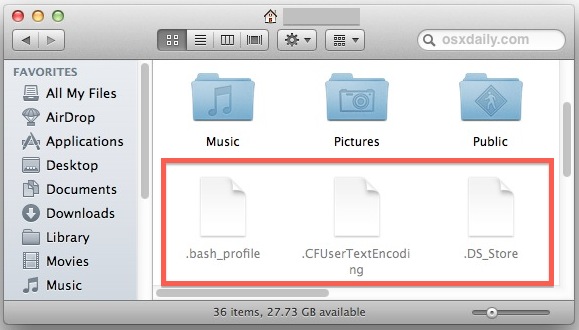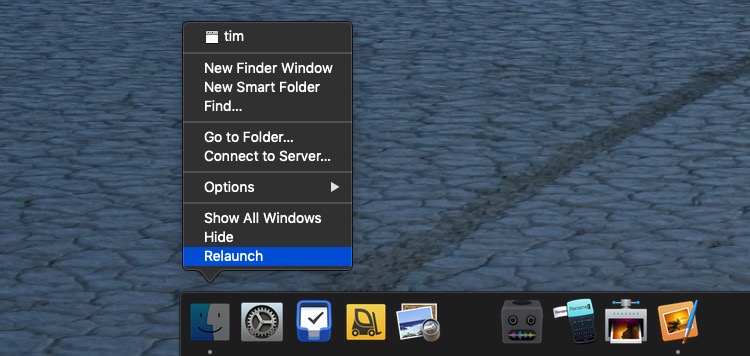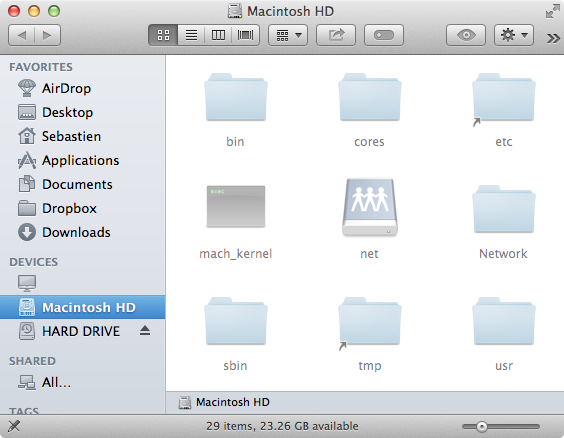- App For Showing Hidden Files On Mac High Sierra
- App For Showing Hidden Files On Mac Shortcut
- Mac Hidden Files Show
This app allows you to control Mac OS X by using the command line to enter Unix commands. Therefore, files that are not used frequently are put out of sight. Typically, Mac users need to use the terminal to hide or show certain files, which may be a hindrance to some people, making this program helpful. IBoysoft Data Recovery for Mac is one of the best Mac data recovery software to recover hidden and deleted files on Mac. With this tool, you can recover disappeared files from external hard drives, SD cards, USB flash drives, and Mac internal hard drives, etc. The long way to show hidden Mac OS X files is as follows: Open Terminal found in Finder Applications Utilities In Terminal, paste the following: defaults write com.apple.finder AppleShowAllFiles YES. Show Hidden Files Using Show Hidden Files App. Here is an easy way to view hidden files on Mac. Use the Show Hidden Files application. This app makes searching hidden files as easy as possible. You can even delete any useless hidden data with just one click! Download Show Hidden Files app from the Mac App Store. Install and launch the app. Find hidden junk, large old folders, background apps, and heavy memory consumers. Use CleanMyMac X to free up space on your Mac and tune it for maximum speed. The new version effectively blocks.
Do you know that macOS will hide some files on your Mac? Each file on your Mac device has a different purpose. And Likewise, every hidden file on your device has a purpose because of which it is kept from the users. This not only protects the essential files and data from being erased but also prevents a myriad of damages of the system in any way.
Yet, you might find troubleshooting problems with specific hidden files, and these need to be removed from your device. In that case, you have to find the hidden files first. And we will guide you how to show hidden files on a Mac and delete them in an easier way in this article.
Common Questions from Mac Users About Hidden Files
When we talk about hidden files on Mac, there come questions by users from all over the world. Thus, every query is to be resolved in its own way. Yet, some of the most common and frequently asked questions are worth replying to in detail.
Q1: What Are Hidden Files on Mac?
The hidden files on Mac are the few files that are hidden from the users. Apple usually keeps the log, preferences, caches, and other such files away from the eyes of the user. As these files are hidden, there are also options to view hidden files on Mac. By following a few steps, you can have a look at those hidden files on your Mac devices.
There are several ways by which you can even add your personal files to the hidden files section and look for them through the specific process only. These files are protected for the purpose of security, majorly at the times of any damage to the system.
Q2: What Types of Files That Your Mac Usually Hides?
Mac devices hide sensitive files. The data is saved in logs, preferences, and caches of files that are hidden from the users.
At times of any damage to the system, these hidden files ensure that you can get the data back from these hidden files in your Mac devices. Be it the purpose of security or the emergency backup option, these hidden files have different purposes for their existence.
Q3: Why Mac Hides Those Files And Folders?
Mac hides some of the files for various reasons and purposes. Since the files that it hides carry logs, preferences, and caches of your system data as well as your personal ones, it is crucial that such files are safe. Therefore, one reason for hiding such files is the security of the data.
Other than that, at times when your device might face system failure, or there is any damage to the device, these hidden files save them all. They also work as a backup of such files that are important for your device. There are three main types of files that the Mac hides, the one which is accessible to the user, the one which is visible to the user but not available, and the one which is neither accessible or visible to the users but the authorities only.
Q4: How to Show Hidden Files on Mac?
There are different ways to show hidden files on macOS. Since these hidden files are essential to both the users and the authorities, it can only get access by following specific patterns and steps guided below. If you are wondering how to show hidden files on Mac, out of the various ways to do the needful, 4 necessary ways are the most efficient ones.
Here Are Top 4 Ways to Show Hidden Files on Mac
Next we will intorduce 4 ways to view hidden files on your Mac, you can choose one of them depending on your needs.
Way 1: Locate Hidden Files on Mac with A Keyboard Shortcut
New technologies work best with compatible versions of the device, as well as the software, when you are looking for the hidden files to show up on your Mac through the keyboard shortcut, ensure that you have the latest update of the software version running in your devices. The rest of the steps are easy for those who have great command in this sector.
To search the hidden files on Mac, open the finder of the macOS and navigate the folder where the hidden files might be present. The next step is to press the “Command + Shift + Period(that’s the . key)” altogether to find the locations of the hidden files on your device. You can now see all the hidden files on your screens through this keyboard shortcut to find the files.
The limitations of this way:
1. This way only applies to modern macOS versions. If your Mac is running earlier version, then you need to find another easy solution instead. Or you can just turn to our recommended way.
2. If you want to delete those hidden files manually after locating them, that maybe a little bit risky in that case. Because many of hidden files are configuration files for some programs on your device or are some important files for your system. So if you delete some hidden files that are necessary, then that may cause your Mac to malfunction. You need a safer way to get it done.

Way 2: Show Hidden Files on Mac with Finder
There are several ways to show invisible files on Mac, but some of the efficient ones are here to help you get the results. Finder is more like the ultimate search engine for your Mac devices having all the knowledge of the system; thus, using the Finder to look for the hidden files on Mac also works.
There can be two ways while looking for hidden files from the finder, the one where you need to press “Command + Shift + Period (that’s the . key)” in unison to get the exact location. Another way is to hold the alt key and click on the go at the top of your screen. Now, click on the Library folder, and you get access to all the hidden files in your Mac.
The limitations of this way:
1. This way only applies to macOS Sierra.
2. Still the same thing like the way 1, you can not ensure the safty of deleting those hidden files on Mac manually.
Way 3: Show Hidden Files on Mac with Terminal
The third way is to show hidden files on the Mac Terminal. The terminal in your Mac devices demands a few steps to locate the hidden files. The first step goes with opening terminal and putting details like defaults write com.writer.apple. Finder AppleShowAllFiles true and press return. Follow these steps, and you will get the location of all the hidden files in your Mac devices.
The limitations of this way:
1. This way is a little bit difficult for those beginners and that may cause operation error.
2. The whole process of showing hidden files may take times.
Although the steps, as mentioned above, are the pro-like steps for tech-nerd to follow, more like confusing as well as complex, here are some of the other ways through which you can find the solutions to your problems with ease.
One-stop Solution: Find Hidden Files And Remove Them to Free up Space on Your Mac
If you need to find hidden files on your Mac for clearing junk files, the way below will be the easiest solution for that - using Umate Mac Cleaner. This is the ultimate way to show hidden files and remove them to free up space on your Mac.
Be it clearing the unwanted files, you can simply erase them off the system in one click using Umate Mac cleaner. This app is specially designed to fulfill such purposes for you in the easiest ways.
The files that the app supported to find and clean up are:
- More than 40 types of junk files: It has the ability to locate and clear out more than 40 types of junk files, including the system junk, app junk, iTunes junk, iOS downloads, etc with ease.
- Large Files: For those large files that are over 50MB, the app is also there to help and delete them in a flash.
- Duplicate Files: Are you carrying duplicate files on your Mac, as well? Worry not, Umate Mac Cleaner can eliminate such unnecessary files without you having to break a sweat.
- Private Data on Your Mac: Since hidden files carry personal data as well, therefore it should be carefully taken care of. With the reliability of the Umate Mac Cleaner, you can also erase those files at ease.
- Unwated Applications & Extensions: Apart from the cleansing of unwanted files and extra ones, the applications and their extensions can be dealt with alongside using this fantastic app for Mac.
How to use the app:
Step 1.Download the app, then install it on your Mac and launch it.

Step 2.Choose one of the features you want to perform and click 'Scan' button.
Step 3.Preview and select those files you want to remove and hit 'Clean' button to confirm your request.
Editor’s Pick: Umate Mac Cleaner - Easy And Fast!
If you are looking for reasons why you should use the Umate Mac Cleaner for your device, here are a few significant points that can help you eliminate your doubts regarding the app. Umate Mac Cleaner is a trustworthy and reliable solution for the users and their Mac devices for the long term. You can 100% trust it and always take chances with this app as it will never disappoint you at any terms.
- 100% trustworthy, for it is recommended and trusted by many famous tech sites like Macworld, MakeUseof, Cult of Mac and more.
- It is absolutely easy to use and 100% workable.
- The app wiill automatically detect all the unnecessary hidden files for safe removal among the plethora of files.
- The app allows you to remove all the unwanted files with just 1 click. Fast and easy. The technology strives to ensure that the entire cleanup is thorough and chase junks from every corner of the device.
- The app will never affect your essential files while doing cleanup.
On a Final Note
If you are wondering about how to find hidden files on Mac, Umate Mac Cleaner has all the reasons to be the part of your Mac device. Feel free to use it without the worry of any damage to the system or the files at all. You can absolutely rely on this app when it comes to narrowing down to the hidden files in your device.
If you cannot view some important hidden files on your Mac computer, don't worry. Here, you can find reliable methods about how to show hidden files on Mac external hard drive. Mac file recovery software supports you to find and restore all hidden files on the Mac or external storage devices with simple clicks.
'I got some important files saved on my Mac disk and I hide them on the computer so to avoid accidental deletion. Now I want to use some of these hidden files. So do you have a simple way that can help me to view, see, and find hidden files on my Mac?'

Recently we got a question from a user whether it is possible to find hidden files on a Mac hard drive. The answer is YES. You can just follow the provided methods to show the hidden files on your Mac computer or hard disk, external storage devices.
| Workable Solutions | Step-by-step Troubleshooting |
|---|---|
| Fix 1. Show Hidden Files With Finder | Open a new Finder window > click on the name of your Mac under 'Devices' > click on System...Full steps |
| Fix 2. View Hidden Files With Terminal | Open Terminal > Copy and paste the command into the Terminal window...Full steps |
| Fix 3. Restore Disappeared Files With Software | Download EaseUS file recovery software for Mac > Choose a drive to scan > preview and recover...Full steps |

If you are a Windows user, refer to recover hidden files on PC to make hidden files show up on your Windows computer.
Method 1. Show Hidden Files using Keyboard Shortcut
This method shows you how to use the Mac keyboard to quickly find hidden files. Here are the detailed steps.
Step 1. Open a new Finder window and click on the name of your Mac under 'Devices' in the sidebar.
Step 2. Click on System, and press Command (⌘) + Shift + . to reveal or hide hidden folders in the Finder.
Step 3. To rehide hidden folders, press Command + Shift + . again.
Method 2. View Hidden Files and Folder on Mac With Terminal
Besides using the keyboard shortcut, you can also use the Terminal command-line interface to view hidden files and folders on Mac. Here's how to do it:
Step 1. Open Terminal application from Launchpad.
Step 2. Copy and paste the following command into the Terminal window:
defaults write com.apple.finder AppleShowAllFiles -bool true
Step 3. Restart Finder with a command: killall Finder.
Then you'll be able to see all hidden files and folders in the Finder.
Method 3. Restore Disappeared Files With Mac File Recovery Software
In some other cases, the files got hidden due to virus attack or OS fault. Under these circumstances, you might need help from third-party data recovery software to get back your files. Here we recommend EaseUS Data Recovery Wizard for Mac. This tool enables you to find and restore all hidden files on Mac computer or external storage devices. Here are some amazing features of EaseUS Data Recovery Wizard.
- Recover lost data from the emptied Trash Bin, accidental deletion, or other causes.
- Supports to repair corrupted Word, Excel, and PDF files during the recovery process.
- The whole recovery process only needs three steps. Simple and easy.
- Supports users to preview all recoverable files.
As mentioned before, this method does not require any specific knowledge and can be used by both experienced and novice Mac users. If you have lost files on your Mac, download and install this software and have a try.
Note: If your hidden files are less than 2GB, EaseUS Data Recovery Wizard for Mac Free Edition can help. You don't need to pay anything with this free file recovery software.
Step 1. Select the disk location (it can be an internal HDD/SSD or a removable storage device) where you lost data and files. Click the 'Scan' button.
Step 2. EaseUS Data Recovery Wizard for Mac will immediately scan your selected disk volume and display the scanning results on the left pane.

Step 3. In the scan results, select the file(s) and click the 'Recover Now' button to have them back.
Why Do Files Suddenly Disappear on Mac?
Sometimes users find their Mac files got disappeared but usually they don't know the reason. Here we list the most common reasons that would lead to file disappear on the Mac or external hard drive.
1. Accidental Deletion.
Sometimes you might delete your files without notice. Generally, if you haven't emptied the Trash bin, you can find and recover the disappeared files from it.
2. Hidden by the System.
In some cases, files are hidden by the operating system, so you can't see them on the external hard drive. It could be that you accidentally hide files, or the system hides sensitive files by default to keep things simple.
3. File System Error.
Files are not showing in an external hard drive because the disk's file system is corrupted. As a result, the computer system fails to access the entries to your files or show these files.
App For Showing Hidden Files On Mac High Sierra
4. Virus Attack.
App For Showing Hidden Files On Mac Shortcut
Your Mac or external hard drive might be infected by a virus or attacked by malware that would hide, delete, or encrypt the files on the drive.
Conclusion
Mac Hidden Files Show
Here are all about how to show hidden files on Mac. No matter your files are lost or hidden by the system, you can find a way in this guide to get back your files. Please remember to be careful with hidden files. If you are not sure what you are doing, you can cause some serious damage pretty quickly.
